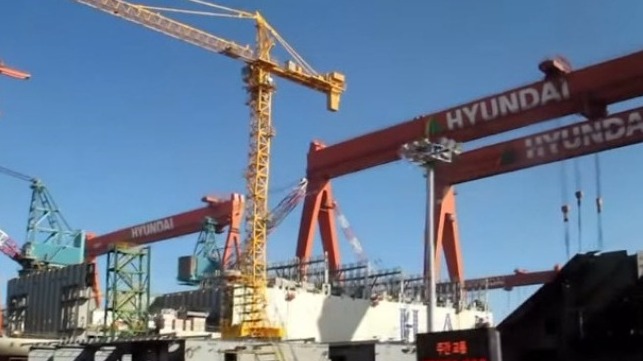Designs for Large Hydrogen Carrier Awarded Class Society Approval

While there is extensive research ongoing exploring hydrogen as a potential fuel source, one area that received less attention is the transportation of hydrogen. A few designs have been presented and Japan's Kawasaki Heavy Industries launched the world's first liquefied hydrogen carrier at the Kobe Works yard as a demonstration vehicle.
As the next step in the development of hydrogen carriers, Hyundai Heavy Industries Group’s Korea Shipbuilding & Offshore Engineering (KSOE) and Hyundai Mipo Dockyard (HMD) announced that they have received an Approval in Principle (AiP) for the first large liquefied hydrogen carrier from the Liberian Registry as the flag state and Korean Register as the class society.
The design is for a 20,000 cubic meters liquefied hydrogen carrier and incorporates several design advancements to make possible a vessel of this size. KSOE developed a liquefied hydrogen cargo treatment system and a hydrogen boil off gas (BOG) treatment system using fuel cells. HMD advanced the basic design of the ship while Hyundai Glovis and G-Marine Service analyzed the economics and safety of liquefied hydrogen during storage and transportation.
This ship design uses a double-structured vacuum insulated tank to improve insulation and minimize hydrogen BOG generated during operation. Also, by adopting an electric propulsion system, hydrogen BOG can be used as fuel for fuel cells in the future.
To transport a large amount of hydrogen by ship, a liquefaction process that reduces the volume to 1/800 and increases stability is essential, according to Hyundai Since hydrogen liquefies at a cryogenic temperature of -253°C, which is lower than LNG that liquefies at -163°C, a liquefied hydrogen carrier needs advanced cryogenic technology to stably preserve it.
According to the companies, the AiP was a key step in perusing the commercialization of the design for a large vessel.
